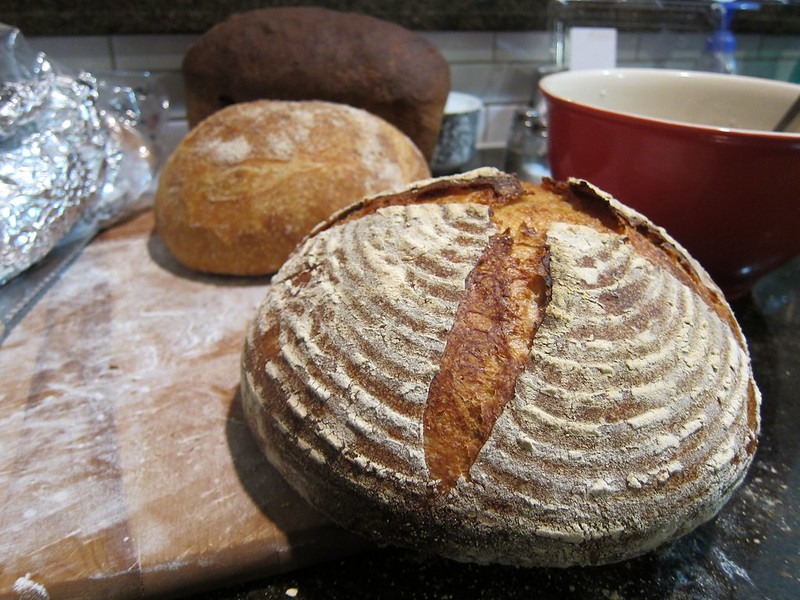New Breads from Old Favourite Flours
- Log in or register to post comments
- 23 comments
- View post
- ananda's Blog
In the beginning of the fall, I took my boys with me on a small trip to Vääksyn mylly, a small mill at about 150 kilometers from where I live. It's the mill of choice of Viipurilainen kotileipomo, the family run bakery I visited earlier this year (and featured in issue 2 of my magazine, Bread), and the owner of the mill is my friend on Facebook.
I've been baking slight variations on this 2 kg miche weekly for a month or so and it's time to share. It's very good. So good that it's keeping me from moving on to my endless backlog of must-try formulae from books and TFL blogs.

As those of you who have made San Joaquin Sourdough know, my procedure calls for a 21 hour cold retardation during bulk fermentation. The length of the cold retardation was taken from Anis Bouabsa via Jane Benoit (janedo on TFL). While I have often increased or decreased the 21 hours by 3 hours or so, I have been wary of a much longer time, because I feared proteolysis would result in unacceptable gluten degradation.


Today, I baked. I baked a no-knead loaf, a sourdough loaf, and batch of Hamelman's Cinnamon Raisin Oatmeal bread.

Something else exciting I worked on this weekend...

Hello everyone,
We visited Terra Breads recently and sampled their apple focaccia (loved it! – a really delicious, seasonal bread for fall).
A friend of mine and I were talking about salted caramel awhile ago...a flavor I adore.
Here is what I came up with, trying to re-create Terra Bread’s delicious apple focaccia, with salted caramel,
here at home :^)
recent baking with home made fresh grape yeast...working well!
petit cheese bread, fig+bacon bread and ham-epi

tomato-basil focaccia

pumpkin filling bread
